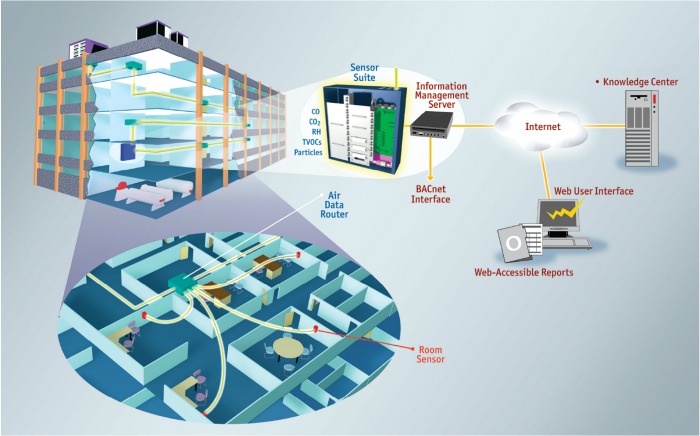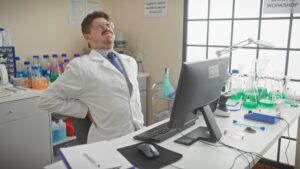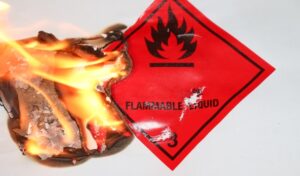
Preventing airflow from creating lab accidents is key to safe research practices. Today there is technology designed to control indoor flow rates by communicating with the exhaust. Depending upon what the exhaust reads, the monitoring devise will alter air flow rates throughout the laboratory, manage temperature, and operate pressure as figures fluctuate. Research suggests that the desired outcome can be achieved but it’s far more complicated than you may think, here is why: The UK based publication, Lab News just released a report citing 70 laboratories that have reported incidents with airflow system. One of which is the $214 million dollar lab designed for Centers for Disease Control in Atlanta. Documents expose that the germ laboratory, which experiments with infectious agents, has trouble with airflow containment. While the agency says that no one has been infected, contaminated air exposed to strains of influenza and other microbes shouldn’t be exposed to the air we deem ‘clean’. This falls back to airflow containment systems that architects, engineers, test and balance firms, and commissioning agents have designed for a specific laboratory space. These systems are designed to minimize energy consumption while providing researchers with a comfortable work environment. But the last, and arguably most important feature, distributing air that supports operation and exposure to control devices is falling short. Federal safety guidelines require sustained directional airflow, drawing in clean air towards potentially contaminated areas.
Airflow systems are designed to help regulate laboratory staff’s exposure to toxins and infectious agents. But with notable laboratories struggling to prevent containment, we thought it was timely to break down key factors that we take into account in Genie designed laboratory, for containment and to prevent airflow obstacles. Here is our breakdown of the three most important things to consider when purchasing an airflow monitoring system for your laboratory.
STANDARDS
OSHA provides laboratory safety manuals for chemical hazards. Always look for an OSHA certified airflow monitoring system for your laboratory. Variable Air Volume (VAV) systems, Usage Based Controls (UBC), Occupied/Un-Occupied modes, and Energy Recovery Unites (ERU) are interdependent components. They work alongside Air Handling Units, which distribute air throughout the ductwork and supply air control devices. They also supply air for exposure control devises, exhaust air flow control devises, exhaust ductwork and exhaust fans. Air distribution needs to be harmonious in order for airflow to remain clean throughout the laboratory, and this is up to the lab designer to ensure this happens. Chemical fume hoods are dependent on the same air supply. To achieve the best results, fume hood placement is essential, so is fume hood density, operating modes of air distribution system, air distribution effectiveness, and air diffuser selection.
PLACEMENT + DENSITY
Your fume hood should rest in a close proximity to differs and transfer air openings.Depending upon the size of your laboratory and the amount of contaminants (risk exposure) you will select a monitoring airflow with measurements and instruments suited to sustain your fume hood’s and laboratories. Fume hoods should be located towards the back of your laboratory, with at least 4 feet distance between the hood and adjacent doors and 4 feet from main traffic in the laboratory. The fume hood should also have 8 feet distance from doorways so there is no cross-draft. The density of the hood depends calls for different air diffusers to deliver air volume. Lab designers ideally keep cross draft, at the plane of the sash, to a maximum of 50% of the designed face velocity. The volume of air that is being delivered is proportionate to velocity. If a diffuser is not mounted flush to the ceiling, or free standing (for laboratories with high ceilings) then discharge characteristics with diffusers are more important. Diffusers should be arranged 5 feet from laboratory hoods and should be two times the area of the fume hood design opening. “The 2:1 ratio can help determine the number of diffusers required to provide adequate make-up air to the lab. The number and size of the diffusers together with the area of the NDZ provides a natural limit to the allowable fume hood density”. (Laboratory Airflow Distribution Task Sheet)
ALARM
pg-32-air2
Once your laboratory has been designed with these items in consideration, the last thing you’ll need is an airflow alarm to alert the user if there is a problem with containment or product protection. Airflow balance is fragile, and exposure to hazards containment is uncalled for, so alarms that are pressure sensor-based provide the best protection to worker safety. To read more about Genie’s air monitor alarm’s click here.
Contact Genie’s technical support at (714) 545-1838 or via e-mail at [email protected] to speak to a consultant about your specific laboratory and we can give advice about our recommendations for the best airflow system for you!




